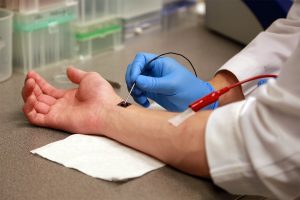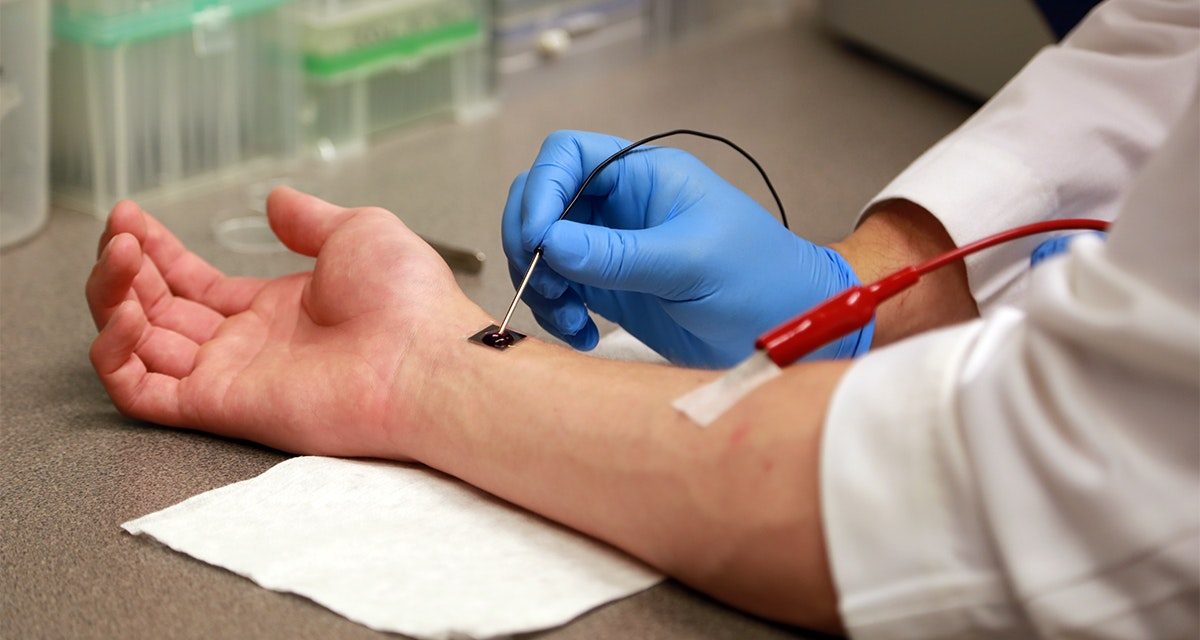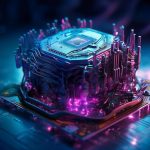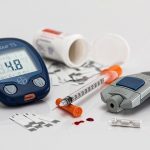
Credit: COURTESY OF THE OHIO STATE UNIVERSITY WEXNER MEDICAL CENTER
Researchers at Ohio State University Wexner Medical Center have used a cutting-edge technology, known as Tissue Nanotransfection Technology also known as (TNT), to create a nanochip the size of a penny, meant to heal live tissue. The tiny device which is placed on the skin for a second and then removed can heal blood vessels, nerve cells and even regrow damaged organs within days, clinical trials have shown. The tiny new skin patch works by injecting genetic code into skin cells, transforming them into stem cells that become any type of cell needed to regenerate wounded blood vessels.
The paper published in the journal Nature Nanotechnology describes how the new technology comprises two components: the nanotech chip designed to introduce reprogrammed DNA into existing adult cells; and a “specific biological cargo” that induces the cells to change from one type to another. As shown in the photo once the chip device is seated on the skin, a droplet containing genetic code is added, and a small electrical charge is applied via a small lead wire. The genetic code is synthetically made to mirror code from the patient, based on what you intend the cells to be, the code will change. Co-author Chandan Sen explained. “So if you want a vasculogenic (blood vessel) cell, the code would be different than if you wanted a neuro cell, and so on and so forth.” The applied electric current then pulls the genetic material into the skin cells.
According to lead author Daniel Gallego-Perez the simplicity of using the device allows it to be used at doctor’s office and outpatient clinic instead of just hospital settings. Co-author Chandan Sen says “with this technology, we can convert skin cells into elements of any organ with just one touch. This process only takes less than a second and is non-invasive, and then you’re off. The chip does not stay with you, and the reprogramming of the cell starts. Our technology keeps the cells in the body under immune surveillance, so immune suppression is not necessary.”
The paper describes experiments that restored brain function after strokes and spared badly injured legs cut in the femoral artery on mice with a single zapping of the TNT device. Healing isn’t instantaneous but within seven to 14 days, blood vessels were regrown to regenerate limbs. But the device must be used within 72 hours of a limb being damaged.
Next Steps
The research team needs approval from the Food and Drug Administration before they can try the TNT device on humans. Sen’s hopeful to get that approval and prove human feasibility within a year with such success, that the technology will be used universally within five years.










